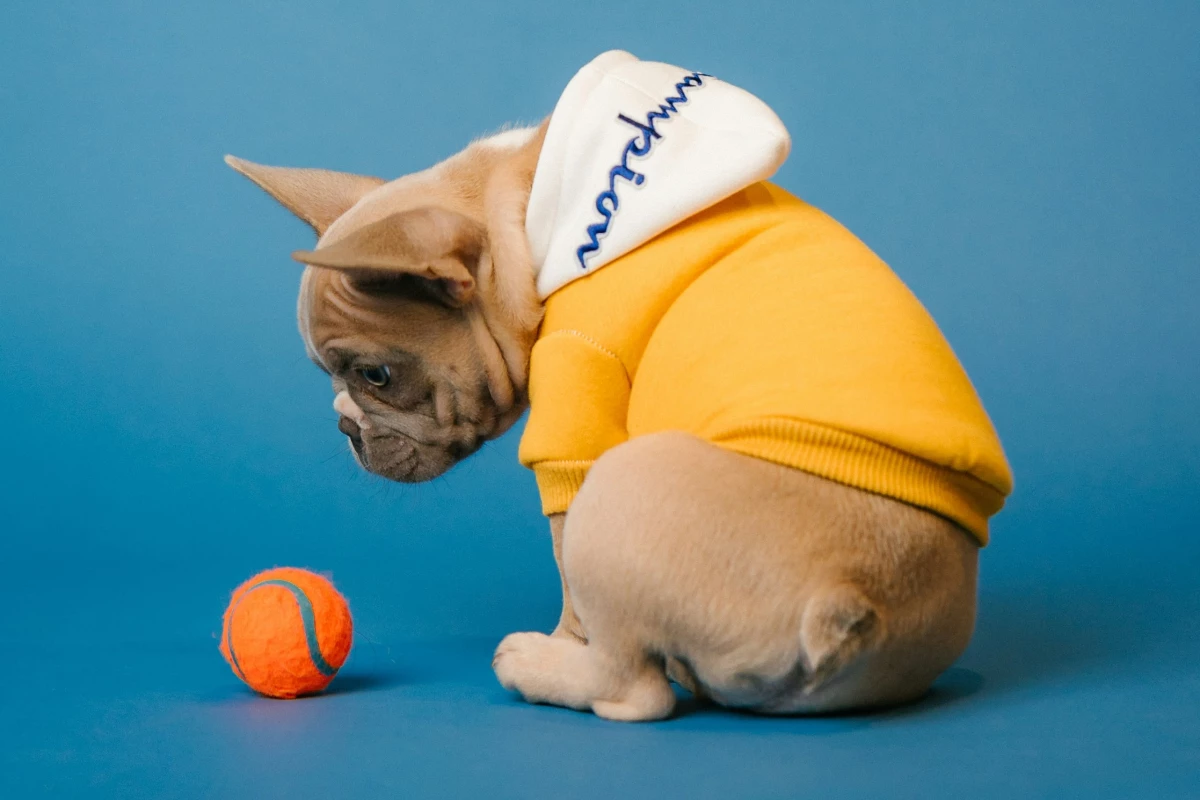Much in the same way humans can become addicted to online gaming or internet gambling, dogs can become addicted to their toys. That's the finding of new research that examined the behaviors of 105 pups in a laboratory setting.
If you're a dog owner, or even just a dog lover, you've likely seen the signs. Intense focus. Trembling. Lip licking. Whining. Agitation. These are all traits a dog might exhibit as a ball is held in a human's hand, ready to be thrown, chased, and retrieved. And while some excitement is healthy and enjoyable during doggie playtime, new research says that there are times when basic pup play turns into something more obsessive: toy addiction.
To uncover this seedy underside of canine culture, researchers, led by Alja Mazzini from the University of Bern in Switzerland, studied 105 dogs from a range of species. Each dog was placed in a room with its owner and a researcher, and allowed to choose a toy from among three options. If the dog had a favorite toy, the owner provided it and that was put in the mix. After the dog chose a toy, the other two were put away. The team found that 45 dogs chose a ball, 39 chose a plush toy, nine selected a tug toy, and the rest chose some kind of hybrid toy.
Afterwards, a range of tests were carried out including the owner playing with the dog and the toy; the dog engaging with the toy on its own; providing a food puzzle alongside the toy and on its own; and then removing the toy either by putting it on a shelf or locking it in a box in the room.
The dogs' behaviors were then ranked according to characteristics typically seen in humans with addiction issues.
These included craving, indicated by the dog focusing on the toy more than 50% of the time despite other distractions; lack of self control, shown by dogs that would lunge at the experimenters' hands before the toy was released; craving, indicated by vocalizing in the direction of the toy or excessive pacing; and salience, which means the dogs continued to look for the toy and ignored the attractive alternative of a food puzzle in the room.
In some cases, as you can see in the following video of a malinois used in the study, the dog's obsession with the toy was so great that it actually destroyed the box in which it was being hidden.
In the end, the researchers found that 33 of the 105 dogs tested exhibited addictive-like behaviors towards the toy, a condition that is popularly referred to as a dog being a "ball junkie." They say that their work demonstrates that dogs are the only species other than humans which exhibit spontaneous addictive traits. They also indicate that humans may have a role in inducing such behaviors by teaching dogs to fetch and play tug with their toys.
"Playing with toys allows dogs to express instinctive predatory sequences such as chasing, catching, possessing and 'dissecting,' considered to be intrinsically rewarding to them based on their species and breed histories," write the researchers in their study, which has been published in the journal Scientific Reports. "None of this is pathological, nor is gambling or computer gaming in people. However, such highly rewarding activities have the potential to become obsessive in humans, and the same may be true for dogs."
While the study doesn't go into detail regarding what might make one dog exhibit addictive behaviors over another, the authors say that this is the first detailed look at addiction in dogs and that their work opens the door to future research to help us understand addiction across species. They also indicate that more research is needed to determine if an excessive focus on toys negatively impacts the wellbeing of dogs.
Source: Springer Nature via Scimex





